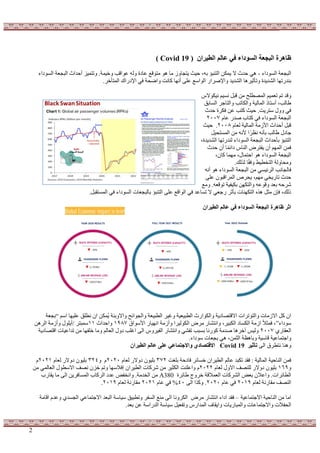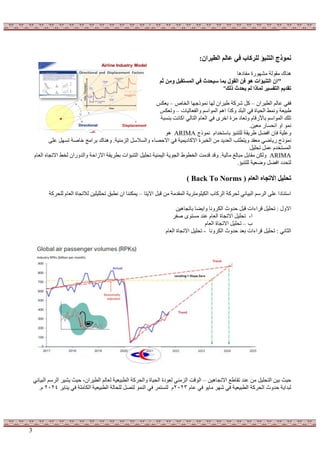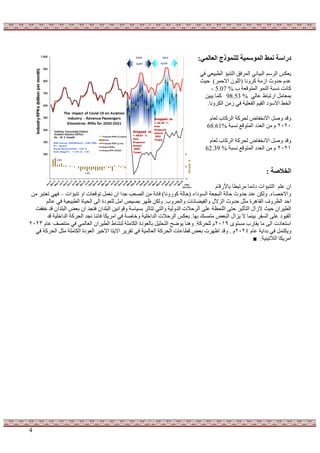black swan.pdf
- 1. 8 ŌĆ½ž¦ŌĆ¼ ┘ŗŌĆ½ž¦┘äžĘž©┘Źž╣ŌĆ¼ ŌĆ½ž¦┘ä┘łžČž╣ŌĆ¼ ŌĆ½ž¦┘ä┘ēŌĆ¼ ŌĆ½┘äž╣┘łž»ž®ŌĆ¼ Back To Norms ŌĆ½ž╣ŌĆ¼┘øŌĆ½ž╣ŌĆ¼ ┘Å┘īŌĆ½ž╣ž©ŌĆ¼ ŌĆ½┘ÉžŠ┘æž░ŌĆ¼ : ŌĆ½ž¦ž╣ž░ž¦ž»ŌĆ¼ ŌĆ½ž¦┘ä┘ł┘éž░┘枬ŌĆ¼ ŌĆ½ž╣ž▓ž¼ž┤ŌĆ¼┘Ā ŌĆ½ž╗ž╣ŌĆ¼┘Ü ŌĆ½ž¦žŻ┘ä┘śž░ž¦┘üŌĆ¼ ŌĆ½žŠŌĆ¼┘ĪŌĆ½ž¦┘īž▓ž«žĘŌĆ¼┘Ü ŌĆ½ž©ŌĆ¼┘ÖŌĆ½┘ģŌĆ¼┘ĪŌĆ½┘īž▓žŠ┘ģŌĆ¼ ┘£ŌĆ½žźžĮž░ŌĆ¼ ŌĆ½ž©ž»ŌĆ¼┘ĀŌĆ½ž¦┘īž▓žŠž░ŌĆ¼ ┘£ŌĆ½ž¦┘ī┘ēž¼ž┤ŌĆ¼ ŌĆ½┘īž┤ž┤┘łž©ž»ŌĆ¼ ┘ÆŌĆ½ž┤ž¦ŌĆ¼┘ĪŌĆ½ž¦┘īžĘŌĆ¼ . ┘Æ┘ÜŌĆ½┘üž¼ž░ŌĆ¼ ŌĆ½┘äž©ž╣ž░žŁŌĆ¼ ŌĆ½ž¦žĮžĖž©žĪŌĆ¼ ┘ōŌĆ½┘æ┘ēŌĆ¼┘Ā ŌĆ½ž¦┘äŌĆ¼ ŌĆ½┘äž┤ž¦ž│ŌĆ¼ ŌĆ½ž▓ž«ž▓ŌĆ¼┘Ā ┘ÆŌĆ½ž¦ŌĆ¼ ┘¤ŌĆ½┘ü┘üŌĆ¼ ŌĆ½┘äž░ŌĆ¼┘ø┘īŌĆ½ž¦ŌĆ¼ ┘ō┘śŌĆ½ž¦┘īž┤ž¦ŌĆ¼ ┘Ä┘øŌĆ½ž▒┘ģŌĆ¼ ŌĆ½ž░ŌĆ¼┘ĀŌĆ½ž¦┘īž╣ž░ŌĆ¼ ┘ō┘É ŌĆ½ž┤ž┤┘łž©ž»ŌĆ¼ ┘ÆŌĆ½ž┤ž¦ŌĆ¼┘ĪŌĆ½ž¦┘īžĘŌĆ¼ ŌĆ½ž½ž”žĘž░ž¦ž│ŌĆ¼ ŌĆ½ž┤ŌĆ¼┘ĀŌĆ½ž▒┘ģž©ž│ŌĆ¼ ŌĆ½ž«ŌĆ¼┘ĪŌĆ½žźžĮžĖž©ž”ŌĆ¼ ŌĆ½ž▒žŠž░ž»ŌĆ¼┘Ü ŌĆ½žŻ┘śž░ž¦┘üž©ŌĆ¼ ŌĆ½┘Éž«ž▓┘Ź┘üž«ŌĆ¼ ŌĆ½ž┤žŁŌĆ¼┘ĪŌĆ½┘Éž▓ž║ŌĆ¼┘Ü ŌĆ½ž¦ž╣ž▓┘æž©ž»ž¦ŌĆ¼ ┘Ø┘ŹŌĆ½ž╣ŌĆ¼ ┘Å┘ÖŌĆ½┘öžĖž┤ž▒ŌĆ¼ ┘Å┘Ö┘Ź┘Ī┘ŹŌĆ½ž▒žŠŌĆ¼┘Ü ŌĆ½┘éŌĆ¼┘øŌĆ½┘īž║ŌĆ¼ ┘ÆŌĆ½ž┤ž¦ŌĆ¼┘ĪŌĆ½ž¦┘īžĘŌĆ¼ ŌĆ½ž«ŌĆ¼┘Ī┘æ┘īŌĆ½ž¦┘īž╣ž©ŌĆ¼ ┘Ü ┘£ŌĆ½ž¦┘ī┘æž░ŌĆ¼ ŌĆ½ž░žŁŌĆ¼┘ĪŌĆ½ž½ž╣ŌĆ¼ ŌĆ½ž©ŌĆ¼┘Ö┘Ģ┘É┘Ü ┘£ŌĆ½ž¦┘ī┘æž░ŌĆ¼ ŌĆ½ž┤žŁŌĆ¼┘ĪŌĆ½┘äžĖŌĆ¼ ŌĆ½ž©ŌĆ¼┘Ö┘Ģ┘É ŌĆ½ž½ž©┘īžĘž¼ž╣ŌĆ¼ ŌĆō ŌĆ½┘ś┘Ģž©┘åŌĆ¼ ŌĆ½ž┤ž┤┘łž©ž»ŌĆ¼ ŌĆ½┘É┘ĢžĖ┘æž©ž»ŌĆ¼┘Ü ┘ÆŌĆ½ž┤ž¦ŌĆ¼┘ĪŌĆ½žĮŌĆ¼ ŌĆ½┘üž«ŌĆ¼┘ÜŌĆ½┘Éž╣ž┤ŌĆ¼ ┘ŗ┘æŌĆ½ž▒ž╣ŌĆ¼ ┘Ø┘ŹŌĆ½ž╣ŌĆ¼ ŌĆ½žźžĘž░ž¦ž│ŌĆ¼ ┘ŗŌĆ½┘ÉžČŌĆ¼ ┘¢ŌĆ½┘śž▓ŌĆ¼ ŌĆ½ž¦┘äž»ŌĆ¼┘Ī┘ŹŌĆ½ž¦┘īž▓žŠŌĆ¼ ŌĆ½ž¦┘īž▓┘Ģž¼žżž¦ž»ŌĆ¼┘Ü ┘¤ŌĆ½┘üŌĆ¼ ┘Å┘īŌĆ½ž╣ž©ŌĆ¼ ┘ÆŌĆ½ž┤ž¦ŌĆ¼┘ĪŌĆ½ž¦┘īžĘŌĆ¼ ŌĆ½┘łž©ž¦┘äž▒žŠž©ž»ŌĆ¼ ┘¤┘ī┘ÜŌĆ½ž¦┘īž░ŌĆ¼ ┘×┘øŌĆ½ž¦┘īž║ŌĆ¼ ┘ŗŌĆ½┘ī┘Ź┘Ģ┘ģŌĆ¼ IATA ┘¤ŌĆ½ž┤ž┤┘łž▓ŌĆ¼┘Ü ŌĆ½┘ĢžĖŌĆ¼┘Ā┘øŌĆ½ž¦┘īž¼ŌĆ¼ žīŌĆ½ž┤ž½ž©žĄŌĆ¼┘ĀŌĆ½ž¦žź┘äŌĆ¼┘Ü ŌĆ½┘É┘ĢžĖ┘æž«ŌĆ¼┘Ü ┘ÆŌĆ½ž┤ž¦ŌĆ¼┘ĪŌĆ½ž¦┘īžĘŌĆ¼ ┘¤┘öŌĆ½ž¦┘ī┘æž░ŌĆ¼ ŌĆ½ž«ŌĆ¼┘Ī┘æ┘īŌĆ½ž¦┘īž╣ž©ŌĆ¼ ) ┘ÜŌĆ½┘ēž©ŌĆ¼┘ĀŌĆ½ž¦ŌĆ¼ - (ICAO žī ŌĆ½ž¦┘ī┘æž║┘ŹžĖŌĆ¼┘Ü ┘¤┘æ┘īŌĆ½ž¦┘īž╣ž©ŌĆ¼ ŌĆ½┘ī┘Ź┘æžĘž©ž│ž¦ž»ŌĆ¼ ( (ACI ŌĆ½ž░ŌĆ¼┘ĀŌĆ½ž¦┘īž╣ž░ŌĆ¼┘Ü ┘ō┘É ŌĆ½ž┤ž┤┘łž©ž»ŌĆ¼ ┘ÆŌĆ½ž┤ž¦ŌĆ¼┘ĪŌĆ½ž¦┘īžĘŌĆ¼ žīŌĆ½ž«ŌĆ¼┘Ī┘æ┘īŌĆ½ž¦┘īž╣ž©ŌĆ¼ ┘ōŌĆ½┘ī┘ēŌĆ¼┘Ü ŌĆ½ž¦┘ī┘æž╣ž╝┘Źž«ŌĆ¼ ┘ō┘æŌĆ½ž▒┘ēŌĆ¼ ┘¤ŌĆ½┘üŌĆ¼ ┘ÄŌĆ½ž╣ž░ŌĆ¼ ŌĆ½ž»ŌĆ¼┘øŌĆ½ž╣ŌĆ¼┘Ü ŌĆ½žŻž╣žĖŌĆ¼ ŌĆ½ž¦ž╗žŠž«ŌĆ¼┘Ü ┘ō┘Ī┘Ź┘ŹŌĆ½┘ī┘Ź┘枊ŌĆ¼ ŌĆ½ž«ž©žĘž«ŌĆ¼┘Ü ŌĆ½ž½ž©┘ī┘Ģž║ž¼ž«ŌĆ¼ ŌĆ½┘ī┘Źž┤ž┤┘łž©ž»ŌĆ¼ žīŌĆ½ž¦┘ī┘æžĖ┘Ģž╣ž«ŌĆ¼ ŌĆ½ž┤ŌĆ¼┘ĪŌĆ½žĮŌĆ¼ ŌĆ½ž▒ž╝ž╣ŌĆ¼ ┘ŗŌĆ½┘łŌĆ¼ ŌĆ½ž┤ž┤┘łž«ŌĆ¼ ŌĆ½ž©ž»ŌĆ¼┘ĪŌĆ½ž¦┘ī┘üž┤ž╗ŌĆ¼ ŌĆ½žĮž┤┘éŌĆ¼┘Ü ┘ŗ┘Ī┘ŹŌĆ½ž¦┘īž▓žŠŌĆ¼ ŌĆ½ž¦┘īž«ž©žĘž«ŌĆ¼ ŌĆ½ž©ŌĆ¼┘ÖŌĆ½ž½ŌĆ¼ ŌĆ½┘É┘æž©ŌĆ¼ ┘×ŌĆ½žżž»ŌĆ¼┘Ā ŌĆ½ž▒┘ī┘ćŌĆ¼ ┘Ø┘īŌĆ½žźŌĆ¼ ŌĆ½┘ŖŌĆ¼┘øŌĆ½ž¦┘īžŠžĖŌĆ¼ ┘Ø┘ŹŌĆ½ž╣ŌĆ¼ ŌĆ½┘öž▓ž©ž”žĖŌĆ¼ ŌĆ½┘Éž«ž▓┘Ź┘üž«ŌĆ¼ ┘ŗŌĆ½┘ÉžČŌĆ¼ ŌĆ½ž¦┘īžĘž©ž”ž┤ž¦ž»ŌĆ¼ ŌĆ½žĘ┘Ģž©ž╣ž«ŌĆ¼ ŌĆ½ž┤ž┤┘łž©ž»ŌĆ¼ ┘ŗŌĆ½┘ÉžČŌĆ¼ ŌĆ½ž┤ž┤┘łž«ŌĆ¼ ┘Ü ŌĆ½┘ĢžĖŌĆ¼┘Ā┘øŌĆ½ž¦┘īž¼ŌĆ¼ ŌĆ½ž╣ž«ŌĆ¼┘ø┘æŌĆ½┘Éž║ŌĆ¼ ŌĆ½ž┤ž½ž©žĄŌĆ¼┘ĀŌĆ½ž¦ž¦┘äŌĆ¼ . ŌĆ½┘üŌĆ¼ ŌĆ½┘Ģž©┘åŌĆ¼┘Ö ŌĆ½ž╝ž©ŌĆ¼┘ĀŌĆ½žŻŌĆ¼ ŌĆ½ž░ŌĆ¼┘ĀŌĆ½ž¦┘īž╣ž░ŌĆ¼ ┘ō┘É ŌĆ½ž¦┘ī┘æžżž┤ž┤ž¦ž»ŌĆ¼ ŌĆ½ž¦┘äž«ž▓ž¼ž©ž│ŌĆ¼ ŌĆ½ž»┘äž«ŌĆ¼ ŌĆ½┘öž▓ž©ž”žĖŌĆ¼ žīŌĆ½ž¦┘īž▓┘Ģž¼žżž¦ž»ŌĆ¼ ŌĆ½┘öž▓┘łž┤ŌĆ¼ ŌĆ½ž©ŌĆ¼┘Ö┘Ģ┘É ŌĆ½ž©žĘŌĆ¼┘ĪŌĆ½┘äŌĆ¼ ┘ŗ┘ÉŌĆ½ž╣ž©ŌĆ¼ ┘ŗŌĆ½ž¦┘īž▓┘üž©ž╗ŌĆ¼ / ŌĆ½ž¦ž¦┘äžĮž▓ž║ž©ž®ŌĆ¼ Coefficient of Determination ┘Ü ┘ÅŌĆ½ž½ž©┘īž┤ž║ŌĆ¼ ┘ō┘É ┘ÆŌĆ½žŻŌĆ¼ ┘ŚŌĆ½ž¦žĮž▓ž║ž©ž½ŌĆ¼ ┘¢ŌĆ½žĮž░ŌĆ¼┘Ü ŌĆ½ž¦┘äŌĆ¼ ┘¤ŌĆ½┘ē┘üŌĆ¼┘Ā ŌĆ½┘ŖŌĆ¼┘øŌĆ½┘ī┘ŹžŠžĖŌĆ¼ ┘Ø┘ŹŌĆ½ž╣ŌĆ¼ ŌĆ½┘öž▓ž©ž”žĖŌĆ¼ ŌĆ½ž«ŌĆ¼┘ĪŌĆ½ž©ž╣ŌĆ¼┘ĪŌĆ½┘äŌĆ¼ ŌĆ½ž«ŌĆ¼┘ĪŌĆ½┘Éž┤ž╗ŌĆ¼ ┘ÜŌĆ½žŻŌĆ¼ ŌĆ½┘ŖŌĆ¼┘øŌĆ½ž¦┘īžŠžĖŌĆ¼ ┘Ø┘ŹŌĆ½ž╣ŌĆ¼ ŌĆ½ž│žŁŌĆ¼┘øŌĆ½ž¦┘īžĖŌĆ¼ ŌĆ½ž¦┘ī┘ēž©┘É┘Źž«ŌĆ¼ ŌĆ½žźž¦┘äŌĆ¼ ┘Ś┘öŌĆ½žŻŌĆ¼ ŌĆ½ž║ž©┘īž¼ž©ŌĆ¼ ŌĆ½┘Éž©ŌĆ¼ ┘ÄŌĆ½ž║ž▓ž«ž░ŌĆ¼┘Ā ┘Ø┘ŹŌĆ½ž╣ŌĆ¼ ŌĆ½┘öžĘž©┘éŌĆ¼ ŌĆ½ž¦ž╣ž╣ŌĆ¼┘Ü ┘¤ŌĆ½┘üŌĆ¼ ┘Å┘īŌĆ½ž╣ž©ŌĆ¼ ┘ÆŌĆ½ž┤ž¦ŌĆ¼┘ĪŌĆ½ž¦┘īžĘŌĆ¼ ŌĆ½┘ł┘æžżž┤ž┤ŌĆ¼ ŌĆ½ž░ŌĆ¼┘ĪŌĆ½ž╣ŌĆ¼ ┘ŗ┘Ī┘ŹŌĆ½┘ī┘Źž▓žŠŌĆ¼ . ┘Ü ┘¤ŌĆ½┘üŌĆ¼ ┘¢ŌĆ½┘śž▓ŌĆ¼ žīŌĆ½ž¦┘ī┘æ┘ģž©┘īž«ŌĆ¼ ŌĆ½┘ö┘Ģž©┘äž┤ŌĆ¼ ŌĆ½┘ü┘ēž┤žŁŌĆ¼ ŌĆ½ž░žŁŌĆ¼┘ĀŌĆ½ž╣ž░ŌĆ¼ ŌĆ½┘ī┘Źž▓┘Ģž¼žżŌĆ¼ ┘ÄŌĆ½ž½ž©ž╣ž▓ž«ž░ž¦ŌĆ¼ ┘¤┘Ź┘ÉŌĆ½ž╣ž©ŌĆ¼ ŌĆ½žĄŌĆ¼┘øŌĆ½┘üžŠŌĆ¼ ŌĆ½ž«ŌĆ¼┘ĪŌĆ½žźžĮžĖž©ž”ŌĆ¼ ŌĆō ŌĆ½ž¦┘äžĮž▓ž║ž©ž®ŌĆ¼ ┘¤┘Ź┘ÉŌĆ½ž╣ž©ŌĆ¼ ŌĆ½ž¦žź┘䞥ž¦žĮž«ŌĆ¼ ┘ÆŌĆ½ž│ž¦ŌĆ¼┘ÜŌĆ½ž¦┘īž░ŌĆ¼┘Ü ŌĆ½ž¦┘ī┘æž┤ž▒ž¼žĘž«ŌĆ¼ ŌĆ½ž▒žĘŌĆ¼┘ø┘æ┘Ģ┘īŌĆ½ž½ž©ŌĆ¼ ŌĆ½ž┤ŌĆ¼┘ĪŌĆ½žĮŌĆ¼ ŌĆ½ž║ž▓ž«ž░┘Éž©ŌĆ¼┘Ā ŌĆ½┘łžŻž»ž¦žŁŌĆ¼ ŌĆ½┘Éž║ž╝ŌĆ¼ ┘Ø┘ŹŌĆ½ž╣ŌĆ¼ ┘×ŌĆ½ž│ŌĆ¼┘øŌĆ½┘ÉžŠŌĆ¼ x,y . ŌĆ½ž¦┘äŌĆ¼ ŌĆ½ž╣ž¦┘ä┘åŌĆ¼ ŌĆ½ž¬┘īž©žżž¦ž½ŌĆ¼ ŌĆ½ž¦┘äžĘž¦ž”ž▒ž¦ž½ŌĆ¼ ŌĆ½┘䞥┘īž¦ž╣ŌĆ¼ ŌĆ½ž©ŌĆ¼┘Ö┘É┘ø┘ÖŌĆ½┘É┘üŌĆ¼ ŌĆ½žĘž©┘öž╣ž«ŌĆ¼ ŌĆ½ž┤ž┤┘łž«ŌĆ¼ ┘ŗŌĆ½┘ī┘ēŌĆ¼ žī ┘ÆŌĆ½ž┤ž¦ŌĆ¼┘ĪŌĆ½ž¦┘īžĘŌĆ¼ ┘Å┘īŌĆ½ž╣ž©ŌĆ¼ ŌĆ½žĘ┘Ģž©ž╣ž«ŌĆ¼ ┘¤ŌĆ½┘üŌĆ¼ ŌĆ½ž¦ŌĆ¼ ŌĆ½ž½žĘ┘Źž¬ŌĆ¼ ŌĆ½┘īž▓┘Ģž¼žżŌĆ¼ ŌĆ½ž«ŌĆ¼┘Ī┘Ź┘æŌĆ½┘īž╣ŌĆ¼ ŌĆ½┘īž«ž©žĄŌĆ¼ ŌĆ½ž¦ŌĆ¼ .ŌĆ½ž©ŌĆ¼┘ÖŌĆ½┘ü┘Źž║┘üž▓ŌĆ¼┘Ü ŌĆ½ž©ŌĆ¼┘ÖŌĆ½ž©ž▒ŌĆ¼┘ĪŌĆ½ž║ŌĆ¼┘ĪŌĆ½ž¦ž╣ž▓ž┤ž¦ž▒ŌĆ¼ ┘Ø┘ŹŌĆ½ž╣ŌĆ¼ ŌĆ½ž½┘Ģž©žĪŌĆ¼ ┘Ś┘æ┘Ī┘ĪŌĆ½ž▒┘ģŌĆ¼┘Ü ŌĆ½┘īž┤┘łž©ž®ŌĆ¼ ŌĆ½ž╣ŌĆ¼┘ø┘æŌĆ½┘Éž║ŌĆ¼ ŌĆ½┘ü┘Źž║┘üž«ŌĆ¼ ŌĆ½ž▒ž║ž▓┘Ģž░ŌĆ¼┘Ü ŌĆ½ž«ŌĆ¼ ŌĆ½žČŌĆ¼┘ĪŌĆ½ž¦┘īž▓ž┤┘łŌĆ¼┘Ü ŌĆ½ž░ŌĆ¼┘ĪŌĆ½žĮŌĆ¼┘øŌĆ½ž¦┘īž▓ŌĆ¼ ŌĆ½┘Éž¼ž░ž¦ŌĆ¼ ┘Ø┘īŌĆ½žźŌĆ¼ ŌĆ½ž┤ž½ž©žĄŌĆ¼┘ĀŌĆ½ž¦ž¦┘äŌĆ¼ (Hub To Hub) ."ŌĆ½ž│ŌĆ¼┘øŌĆ½ž¦┘ī┘枊ŌĆ¼ ┘Ø┘īŌĆ½žźŌĆ¼ ŌĆ½ž│ŌĆ¼┘øŌĆ½"ž¦┘ī┘枊ŌĆ¼ ŌĆ½ž½žĘž┤ž¦žĄŌĆ¼ ┘Å┘ÖŌĆ½ž«ž░┘Éž▓ŌĆ¼┘Ü ŌĆ½┘ī┘Źž┤┘łž©ž®ŌĆ¼ ┘ŗŌĆ½ž©ž”ŌĆ¼┘Ö┘īŌĆ½ž¦ŌĆ¼ ŌĆ½ž╣ŌĆ¼┘Ī┘æŌĆ½ž¦┘īž▓ž║ŌĆ¼ ┘Ø┘ŹŌĆ½ž╣ŌĆ¼ ŌĆ½ž▒ž║ž▓┘Ģž░ŌĆ¼ ŌĆ½┘ü┘ēž┤žŁŌĆ¼ ┘¤┘ś┘Ü ŌĆ½ž¦žĮž░ŌĆ¼┘Ü ┘īŌĆ½ž¦ŌĆ¼┘Ü ┘£ŌĆ½ž¦ž»ŌĆ¼ ┘×ŌĆ½ž▓ŌĆ¼ ŌĆ½žĮž©ž”ž┤žŁŌĆ¼ ŌĆ½ž╣ŌĆ¼┘Ī┘ĢŌĆ½ž▒žĖŌĆ¼ ┘Ø┘īŌĆ½žźŌĆ¼ A380 .ŌĆ½ž¦┘īž╣┘枦┘ä┘äž«ŌĆ¼ ŌĆ½ž▒ž║ŌĆ¼┘Ü ŌĆ½┘ĆŌĆ¼ ŌĆ½ž¦┘īž▓ž║žČž”ž«ŌĆ¼ ŌĆ½┘Éž¼ž░žŻŌĆ¼ ┘Ø┘ŹŌĆ½ž╣ŌĆ¼ ŌĆ½┘ĢžĖŌĆ¼┘Ā┘øŌĆ½ž¦┘īž¼ŌĆ¼ ŌĆ½ž┤ž┤┘łž«ŌĆ¼ ŌĆ½┘ü┘Źž║┘üž«ŌĆ¼ ŌĆ½ž▓┘Ģž░ŌĆ¼ (point to point) ┘Ø┘īŌĆ½žźŌĆ¼ ŌĆ½┘ö┘ģžĘž«ŌĆ¼ ┘ō┘É" ."ŌĆ½┘ö┘ģžĘž«ŌĆ¼ ŌĆ½┘Éž¼ž░ž¦ŌĆ¼┘Ü ŌĆ½ž«ž░┘Éž«ŌĆ¼ ŌĆ½ž«ŌĆ¼┘ĀŌĆ½ž¦┘ī┘æž┤┘łžČŌĆ¼ ┘ÄŌĆ½ž╣ž░ŌĆ¼ ┘īŌĆ½ž¦ŌĆ¼ ŌĆ½ž╣ŌĆ¼┘Ī┘æŌĆ½ž╣ŌĆ¼ ┘Ø┘ŹŌĆ½ž╣ŌĆ¼ ŌĆ½┘æžĘž©ž│ž¦ž»ŌĆ¼ ŌĆ½ž╣ž░ž»ŌĆ¼ ŌĆ½ž©ž»žŁŌĆ¼┘ĀŌĆ½žĄŌĆ¼ ŌĆ½ž¦ž╣ž©ž╣ž«ŌĆ¼ ┘ÆŌĆ½┘łž©ŌĆ¼ ┘¤ŌĆ½ž¦┘īž▓ŌĆ¼┘Ü ŌĆ½ž╣žĘž«ŌĆ¼┘øŌĆ½┘Éž▓ŌĆ¼ ┘ÄŌĆ½ž½žŻžĮž║ž©ŌĆ¼ ŌĆ½ž¦┘īž┤žĮž¦┘äž»ŌĆ¼ ┘×ŌĆ½ž¦┘īž▓ŌĆ¼┘Ü ŌĆ½ž¦ŌĆ¼ ŌĆ½ž╣ŌĆ¼┘Ī┘ĢŌĆ½ž▒žĖŌĆ¼ ┘Ø┘īŌĆ½žźŌĆ¼ ┘£ŌĆ½ž»ŌĆ¼ B787 ┘Å┘ĀŌĆ½ž»ž│ŌĆ¼ .ŌĆ½┘Ģž┤ŌĆ¼┘ĀŌĆ½ž¦┘äŌĆ¼ ┘Ø┘ŹŌĆ½ž╣ŌĆ¼ ŌĆ½┘ī┘Źž▓┘Ģž¼žżŌĆ¼ ŌĆ½┘śž▓ž¦ŌĆ¼ .┘ŗ┘Ā┘øŌĆ½ž¦┘īžĘŌĆ¼ ┘£ŌĆ½ž¦┘ī┘æž░ŌĆ¼ ŌĆ½┘ÉžĖžĘ┘Źž╝ŌĆ¼ ŌĆ½ž©ŌĆ¼┘æŌĆ½ž»ž¦ž”ŌĆ¼ ┘ŚŌĆ½ž¦ž╣ŌĆ¼┘ø┘ö ŌĆ½┘üž”┘ö┘Ģž©ŌĆ¼ žī ŌĆ½ž┤ŌĆ¼┘ĪŌĆ½ž¦┘ī┘ģžĖŌĆ¼ ┘£ŌĆ½ž¦┘ī┘æž░ŌĆ¼ ┘Ø┘ŹŌĆ½ž╣ŌĆ¼ ŌĆ½┘ī┘Źž▓┘Ģž¼žżŌĆ¼ ŌĆ½ž½ž©┘ī┘Ģž║ž¼ž«ŌĆ¼ ┘ōŌĆ½┘ī┘ēŌĆ¼ ŌĆ½ž«ŌĆ¼┘Ī┘æŌĆ½ž╣ŌĆ¼┘ø┘æ┘īŌĆ½ž¦ŌĆ¼ ŌĆ½ž«ŌĆ¼┘Ī┘ŹŌĆ½ž¦┘ī┘üžĖŌĆ¼┘Ü ŌĆ½ž«ŌĆ¼┘ĀŌĆ½ž│ŌĆ¼┘ÜŌĆ½ž¦┘īž░ŌĆ¼ ŌĆ½ž«ŌĆ¼┘ĀŌĆ½ž┤ŌĆ¼┘ÖŌĆ½ž¦┘īž┤ŌĆ¼┘Ü ŌĆ½ž«ŌĆ¼┘Ī┘ŹŌĆ½ž¦┘ī┘üžĖŌĆ¼ ŌĆ½ž┤ž¦ž»ŌĆ¼┘ĪŌĆ½ž¦┘īž▓ž║ŌĆ¼ ŌĆ½ž╣┘ēžĖŌĆ¼┘Ā ┘ø┘ś┘Ü . ┘Ü ┘ōŌĆ½ž╣ŌĆ¼ ŌĆ½ž┤ŌĆ¼┘ĪŌĆ½ž¦┘īž▓ž╣ž¼ŌĆ¼ ┘ōŌĆ½┘æ┘ēŌĆ¼┘Ā ┘īŌĆ½ž¦ŌĆ¼ ŌĆ½┘āŌĆ¼┘ĪŌĆ½┘īž▓žĘž¼ŌĆ¼ ŌĆ½ž«ŌĆ¼┘Ī┘ŹŌĆ½ž¦┘ī┘üž╣ŌĆ¼ ŌĆ½┘ģž«ŌĆ¼┘ĀŌĆ½žĘž┤ŌĆ¼ ŌĆ½ž▒žĘŌĆ¼┘ø┘æ┘ö ŌĆ½ž¦┘īž▓┘Ģž¼žżŌĆ¼ ┘ī ŌĆ½ž▒žĘŌĆ¼┘ø┘æ┘ö ŌĆ½ž«ž¦┘ä┘ŖŌĆ¼ ┘ō┘É ┘ÆŌĆ½ž┤ž¦ŌĆ¼┘ĪŌĆ½ž¦┘īžĘŌĆ¼ ŌĆ½žĖ┘Ģž©ž╣ž«ŌĆ¼ ARIMA .┘¤┘æŌĆ½ž╣ŌĆ¼┘ø┘æ┘īŌĆ½ž¦ŌĆ¼ ŌĆ½ž«ŌĆ¼┘Ā┘øŌĆ½ž¦┘īž║ŌĆ¼ ŌĆ½žĮŌĆ¼┘øŌĆ½ž¦┘īž«žĘŌĆ¼ ŌĆ½ž¦ž╣ž▓ž«ž░┘Éž░ŌĆ¼ ŌĆ½┘äž░ŌĆ¼┘Ü ŌĆ½ž«ŌĆ¼┘Ī┘Ģ┘æ┘Ī┘īŌĆ½ž¦ŌĆ¼ - ŌĆ½┘ģž«ŌĆ¼┘ĀŌĆ½žĮž┤ŌĆ¼ ŌĆ½┘ŖŌĆ¼┘ÜŌĆ½ž▒ž▓┘Ģž©ŌĆ¼ ŌĆ½ž░žŁŌĆ¼┘ĀŌĆ½ž╣ž░ŌĆ¼ ┘ŗ┘ÉŌĆ½ž¦ŌĆ¼┘øŌĆ½ž╣ŌĆ¼ ┘ŗ┘Ī┘ŹŌĆ½ž½ž▓┘ģŌĆ¼ ŌĆ½ž¦ž¦┘äž«žĘž©žĪŌĆ¼ ŌĆ½ž╣ŌĆ¼ ┘¤ŌĆ½┘üŌĆ¼ ┘ÅŌĆ½ž▒ž▓žŠ┘ēŌĆ¼ ┘¤ŌĆ½ž¦┘īž▓ŌĆ¼┘Ü ┘¤┘Ź┘ÉŌĆ½ž©ŌĆ¼ ŌĆ½ž╗ŌĆ¼┘ÜŌĆ½ž¦┘ī┘ĢžČŌĆ¼ Displacement ┘īŌĆ½ž¦ŌĆ¼┘Ü ┘ÆŌĆ½ž│ž¦ŌĆ¼┘ÜŌĆ½ž░ŌĆ¼ Rotation .ŌĆ½ž░ŌĆ¼┘ĀŌĆ½ž¦┘īž║ž░ŌĆ¼ ŌĆ½ž▒žĘŌĆ¼┘ø┘æ┘Ģ┘Ź┘ī ŌĆ½ž¦┘äž╣ž¦┘ä┘ł┘Źž¬ŌĆ¼ ŌĆ½ž¦┘䞣ž▒┘āž¬ŌĆ¼ ŌĆ½┘ä┘äž▒┘āž¦ž©ŌĆ¼ ┘ŗŌĆ½┘üŌĆ¼ ŌĆ½ž¦┘äžĘ┘Źž▒ž¦┘ēŌĆ¼ ŌĆ½ž╣ž¦┘ä┘åŌĆ¼ ŌĆ½ž▒žĘŌĆ¼┘ø┘æ┘ö ┘ÅŌĆ½ž▓ž║ŌĆ¼┘Ā ŌĆ½ž¦ŌĆ¼ ŌĆ½┘īžŠž┤┘łž«ŌĆ¼ ┘Å┘īŌĆ½ž╣ž©ŌĆ¼ ┘¤ŌĆ½┘üŌĆ¼ ŌĆ½┘ī┘Źž┤┘łž©ž®ŌĆ¼ ŌĆ½ž«ŌĆ¼┘Ī┘æ┘īŌĆ½ž¦┘īž╣ž©ŌĆ¼ ┘¤┘īŌĆ½ž¦┘īž╣ž©ŌĆ¼ ŌĆ½ž¦┘ī┘Ģ┘æžżŌĆ¼┘Ü ŌĆ½ž«ŌĆ¼┘Ī┘æŌĆ½ž╣ŌĆ¼┘ø┘æ┘īŌĆ½ž½ž©ŌĆ¼ ┘ÆŌĆ½ž┤ž¦ŌĆ¼┘ĪŌĆ½ž¦┘īžĘŌĆ¼ ŌĆō ┘¤ŌĆ½┘üŌĆ¼┘ĪŌĆ½ž¦┘īžĖŌĆ¼ ┘ÅŌĆ½ž╣ŌĆ¼┘ø┘æ┘īŌĆ½ž¦ŌĆ¼ ┘ō┘Ī┘ĪŌĆ½ž║ŌĆ¼┘ĪŌĆ½ž│ž”ŌĆ¼ ┘ō┘Ī┘æŌĆ½ž╣ŌĆ¼┘ø┘æŌĆ½ž½ŌĆ¼ ŌĆ½ž▓žŻžĄž┤ŌĆ¼┘Ā ŌĆ½ž½ž©┘öž«ŌĆ¼ ŌĆ½┘öž║ž░žŁŌĆ¼ ŌĆ½ž▒žĘŌĆ¼┘ø┘æ┘Ģ┘īŌĆ½ž¦ŌĆ¼ ŌĆ½┘śž▓ž¦ŌĆ¼ ŌĆ½ž»ž│ž¦ž╣ž«ŌĆ¼ ŌĆ½┘üž╣┘Ģž░ŌĆ¼ ┘ÅŌĆ½ž╣ŌĆ¼┘ø┘æ┘īŌĆ½ž¦ŌĆ¼┘Ü ┘×┘øŌĆ½ž¦┘īž┤ž▓ŌĆ¼ ŌĆō ŌĆ½ž¦┘ī┘æž░ž¦ž│žĘŌĆ¼ ┘Ø┘īŌĆ½ž¦ŌĆ¼ ŌĆ½ž»žŁŌĆ¼┘øŌĆ½ž¦┘īž╣ŌĆ¼ ┘ÅŌĆ½ž╣ŌĆ¼┘ø┘É ┘¤ŌĆ½ž©ž▒ŌĆ¼┘Ā ŌĆ½ž½ž╣ž░┘śž©ŌĆ¼┘Ü ŌĆō ŌĆ½ž░ŌĆ¼┘ĪŌĆ½ž╣ŌĆ¼ ┘ÅŌĆ½ž╣ŌĆ¼┘ø┘É ŌĆ½┘łž▓ž¦ŌĆ¼┘Ü ŌĆ½ž«ŌĆ¼┘ĪŌĆ½ž©ž╗ŌĆ¼┘ĀŌĆ½ž¦┘īž┤ŌĆ¼ ┘ÅŌĆ½ž¦ž╣ŌĆ¼┘ø┘æ┘īŌĆ½ž¦ŌĆ¼ ŌĆ½┘łž▓ž¦ŌĆ¼┘Ü ┘ō┘Ī┘æ┘ŹŌĆ½ž¦┘ī┘æž║ŌĆ¼ ŌĆ½ž╣┘Ģž░ŌĆ¼ ŌĆ½ž¦┘īž╣┘æž┤žŁŌĆ¼┘Ü ŌĆ½ž¦┘īžŠžĖŌĆ¼ ┘ÅŌĆ½ž╣ŌĆ¼┘ø┘É┘Ü ┘ō┘Ī┘ĪŌĆ½žŠŌĆ¼┘ĪŌĆ½ž¦┘ī┘æž║ŌĆ¼ ŌĆ½ž╣┘Ģž░ŌĆ¼ ŌĆ½ž¦┘äž»ŌĆ¼┘Ī┘æ┘īŌĆ½ž¦ŌĆ¼ ŌĆ½┘üž©┘öž«ŌĆ¼ ŌĆ½ž▒┘ī┘ćŌĆ¼ ŌĆ½ž½ž░ž│ž¦ž╣ž«ŌĆ¼┘Ü ŌĆ½ž¦┘īžŠž┤┘łž«ŌĆ¼ ┘¤ŌĆ½┘üŌĆ¼ ŌĆ½ž¦┘īž«ž©žĄŌĆ¼ ŌĆ½ž▒ž╣ž«ŌĆ¼┘ø┘æ┘ö ŌĆ½ž╣┘üž┤ŌĆ¼ ŌĆ½┘É┘ģžĘž╣ŌĆ¼ ┘ŗŌĆ½┘ī┘ēŌĆ¼┘Ü ŌĆ½ž½┘Źž░ŌĆ¼ ┘ŗŌĆ½┘ü┘Ź┘ēŌĆ¼ .ŌĆ½ž«ŌĆ¼┘Ā┘ÜŌĆ½ž¦┘ī┘ēž┤ŌĆ¼ ŌĆ½ž¦┘īž▓ž┤ž║ŌĆ¼ ŌĆ½ž«ŌĆ¼┘Ī┘É┘ø┘Ī┘īŌĆ½ž¦ŌĆ¼ ŌĆ½ž½ž«žĘžĘ┘Ģž©ŌĆ¼ ŌĆ½┘Ģž╣┘ēžĖŌĆ¼┘Ā ┘Ī ŌĆ½┘ī┘Ź┘æžĘž©ž│ž¦ž»ŌĆ¼ ŌĆ½ž¦┘łž©┘öž░ŌĆ¼ ŌĆ½ž«ŌĆ¼┘Ī┘Ź ŌĆ½ž┤ž┤┘łž©ž»ŌĆ¼ ┘ÜŌĆ½ž¦ŌĆ¼ ŌĆ½žŠŌĆ¼┘ĪŌĆ½┘ī┘Źž▓ž«žĘŌĆ¼ ┘ÆŌĆ½ž┤ž¦ŌĆ¼┘ĪŌĆ½ž¦┘īžĘŌĆ¼ .ŌĆ½ž▒ž¦┘åŌĆ¼ ┘ÜŌĆ½ž¦ŌĆ¼ ŌĆ½ž¦┘īž«žŠŌĆ¼ ŌĆ½┘śž▓ž¦ŌĆ¼ ┘Ø┘ŹŌĆ½ž╣ŌĆ¼ ŌĆ½┘äž╣ž«ŌĆ¼┘øŌĆ½ž¦┘ī┘æž▓ŌĆ¼ ŌĆ½ž¦┘īžŠž┤┘łž«ŌĆ¼ ŌĆ½ž╣ž©ž®ŌĆ¼┘ĪŌĆ½ž¦┘äž╣ž▓ŌĆ¼
- 2. 2 2 ŌĆ½ž¦┘äžĘ┘Źž▒ž¦┘ēŌĆ¼ ŌĆ½ž╣ž¦┘ä┘åŌĆ¼ ┘ŗŌĆ½┘üŌĆ¼ ŌĆ½ž¦┘äž│┘łž»ž¦žĪŌĆ¼ ŌĆ½ž¦┘äž©ž¼ž╣ž¬ŌĆ¼ ŌĆ½žĖž¦┘ćž▒ž®ŌĆ¼ ( Covid 19 ) ŌĆ½ž»ž¦žĪŌĆ¼┘øŌĆ½ž¦┘īž║ŌĆ¼ ŌĆ½ž¦┘īž¼ž║ž╣ž«ŌĆ¼ - .ŌĆ½┘æž«ŌĆ¼┘ĪŌĆ½ž«ŌĆ¼┘Ü ŌĆ½ž¦┘䞬ŌĆ¼┘øŌĆ½ž╣ŌĆ¼ ┘Ś┘ī┘Ü ŌĆ½ž╣ž©ž»žŁŌĆ¼ ŌĆ½┘äž╣ŌĆ¼┘øŌĆ½┘Éž▓ŌĆ¼ ┘ø┘ś ŌĆ½┘Éž©ŌĆ¼ ŌĆ½žĄŌĆ¼┘ÜŌĆ½ž▓ž║ž©ŌĆ¼┘Ā ŌĆ½ž┤ŌĆ¼┘ĪŌĆ½žĮŌĆ¼ žī┘ŚŌĆ½ž½ŌĆ¼ ŌĆ½ž¦┘īž▓┘Ģž¼žżŌĆ¼ ┘ōŌĆ½┘æ┘ēŌĆ¼┘Ā ŌĆ½ž¦┘äŌĆ¼ ŌĆ½žĮž░ž│ŌĆ¼ ┘¤┘ś ┘Ü ŌĆ½ž»ž¦žĪŌĆ¼┘øŌĆ½ž¦┘īž║ŌĆ¼ ŌĆ½ž¦┘īž¼ž║ž╣ž«ŌĆ¼ ŌĆ½žŻžĮž░ž¦ž│ŌĆ¼ ŌĆ½žČŌĆ¼┘Ī┘æŌĆ½ž▒ž▓ŌĆ¼ ŌĆ½ž┤┘śž©ŌĆ¼┘ĪŌĆ½ž▒žŻžĄŌĆ¼┘Ü ŌĆ½ž░žŁŌĆ¼┘ĀŌĆ½ž¦┘īž┤ž░ŌĆ¼ ŌĆ½ž©ŌĆ¼┘ÖŌĆ½ž½┘Ģž░ž│ž▒ŌĆ¼ .ŌĆ½ž¦┘ī┘æž▓žŻž«ž┤ŌĆ¼ ŌĆ½ž¦žź┘äž»ž│ž¦┘åŌĆ¼ ┘¤ŌĆ½┘üŌĆ¼ ŌĆ½ž¦ž╗žŠž«ŌĆ¼┘Ü ŌĆ½┘łž©┘öž░ŌĆ¼ ŌĆ½ž©ŌĆ¼┘Ö┘öŌĆ½žŻŌĆ¼ ┘Ø┘ŹŌĆ½ž╣ŌĆ¼ ŌĆ½ž¦ž╣ž╣ŌĆ¼┘ø┘īŌĆ½ž¦ŌĆ¼ ŌĆ½ž¦žź┘äžĘž┤ž¦ž│ŌĆ¼┘Ü ŌĆ½ž░ŌĆ¼┘ĀŌĆ½ž¦┘īž┤ž░ŌĆ¼ ŌĆ½┘äž░ŌĆ¼┘Ü ŌĆ½ž¦┘äžĘŌĆ¼┘øŌĆ½┘ēŌĆ¼┘Ī┘ö ┘Å┘ĪŌĆ½┘öž║ŌĆ¼ ┘ŗŌĆ½┘äž¼ŌĆ¼ ┘ō┘É ŌĆ½ž¦┘ī┘æžĖžĘ┘Źž╝ŌĆ¼ ┘Å┘Ī┘æŌĆ½ž▒ž╣ŌĆ¼ ┘ÅŌĆ½ž▒ŌĆ¼ ŌĆ½ž¦┘īž║ž©ž½┘āŌĆ¼ ŌĆ½ž¦┘īž▓ž©ž╣ž┤ŌĆ¼┘Ü ŌĆ½ž¦┘ī┘ēž©ž▒ž¬ŌĆ¼┘Ü ŌĆ½ž«ŌĆ¼┘Ī┘īŌĆ½ž¦┘ī┘æž©ŌĆ¼ ŌĆ½žŻž╣ž▓ž©ž▒ŌĆ¼ žīŌĆ½žĮž©┘īž¬ŌĆ¼ ŌĆ½žĮž░ž│ŌĆ¼ ŌĆ½┘ü┘ēž┤žŁŌĆ¼ ┘ōŌĆ½ž╣ŌĆ¼ ŌĆ½┘łž▓ž¬ŌĆ¼ ŌĆ½ž┤ŌĆ¼┘ĪŌĆ½žĮŌĆ¼ .ŌĆ½ž░ŌĆ¼┘ĀŌĆ½ž╣ž▓ž┤ŌĆ¼ ŌĆ½┘ŖŌĆ¼┘Ü┘Ü ┘¤ŌĆ½┘üŌĆ¼ ┘ÄŌĆ½ž╣ž©ŌĆ¼ ŌĆ½žĘž░ž│ŌĆ¼ ŌĆ½┘łž▓ž©ž®ŌĆ¼ ┘¤ŌĆ½┘üŌĆ¼ ŌĆ½ž»ž¦žĪŌĆ¼┘øŌĆ½ž¦┘īž║ŌĆ¼ ŌĆ½ž¦┘īž¼ž║ž╣ž«ŌĆ¼ 7002 ┘ÄŌĆ½┘īž╣ž©ŌĆ¼ ŌĆ½ž«ŌĆ¼┘Ī┘īŌĆ½ž¦┘ī┘æž©ŌĆ¼ ŌĆ½ž¦žŻ┘䞥┘Éž«ŌĆ¼ ŌĆ½žŻžĮž░ž¦ž│ŌĆ¼ ┘ŗŌĆ½┘äž¼ŌĆ¼ 7002 . ŌĆ½ž┤ŌĆ¼┘ĪŌĆ½žĮŌĆ¼ ┘ŗ┘ĪŌĆ½ž¦┘ī┘æž║ž▓žŠŌĆ¼ ┘ō┘É ┘Ś┘öŌĆ½žŻ┘äŌĆ¼ ŌĆ½ž¦ŌĆ¼ŌĆ½┘öžĖž┤ŌĆ¼ ┘Ś┘öŌĆ½ž½žŻŌĆ¼ ŌĆ½žĮž©┘īž¬ŌĆ¼ ŌĆ½ž╣ž©ž»┘ŖŌĆ¼ žīŌĆ½ž░žŁŌĆ¼┘ĀŌĆ½ž¦┘īž┤ž░ŌĆ¼ ŌĆ½ž©ŌĆ¼┘ÖŌĆ½┘ī┘Ģž░ž│ž▒ŌĆ¼ ŌĆ½ž»ž¦žĪŌĆ¼┘øŌĆ½ž¦┘īž║ŌĆ¼ ŌĆ½ž¦┘īž¼ž║ž╣ž«ŌĆ¼ ŌĆ½ž½žŻžĮž░ž¦ž│ŌĆ¼ ŌĆ½ž¦┘īž▓┘Ģž¼žżŌĆ¼ ŌĆ½žĮž░ž│ŌĆ¼ ┘ÆŌĆ½žŻŌĆ¼ ŌĆ½ž©ŌĆ¼┘æŌĆ½ž»ž¦ž”ŌĆ¼ ŌĆ½ž¦┘ī┘Ģž©žĘŌĆ¼ ŌĆ½┘üž▓ž┤ž╣ŌĆ¼┘Ā ┘ÆŌĆ½žŻŌĆ¼ ┘Å┘Ö┘æ┘īŌĆ½ž¦ŌĆ¼ ┘ō┘æŌĆ½┘üŌĆ¼ žī┘ÆŌĆ½┘łž©ŌĆ¼ ŌĆ½┘æž©ŌĆ¼┘Ö┘É žīŌĆ½ž¦žĮž▓┘æž©┘ŖŌĆ¼ ┘ø┘ś ŌĆ½ž»ž¦žĪŌĆ¼┘øŌĆ½ž¦┘īž║ŌĆ¼ ŌĆ½ž¦┘īž¼ž║ž╣ž«ŌĆ¼ .ŌĆ½┘īž▓┘ī┘ćŌĆ¼ ŌĆ½ž©ŌĆ¼ŌĆ½┘ü┘ģŌĆ¼┘Ü ŌĆ½žŠŌĆ¼┘ĪŌĆ½ž¦┘īž▓ž«žĘŌĆ¼ ŌĆ½┘īž«ŌĆ¼┘ÜŌĆ½┘ÉžŠž©ŌĆ¼┘Ü ŌĆ½┘üŌĆ¼ ŌĆ½ž©ŌĆ¼ ┘¤ŌĆ½ž║ŌĆ¼┘ĪŌĆ½ž¦┘īž┤ž”ŌĆ¼ ŌĆ½┘īž║ž©┘öž¬ŌĆ¼ ┘Ś┘öŌĆ½žŻŌĆ¼ ┘ø┘ś ŌĆ½ž»ž¦žĪŌĆ¼┘øŌĆ½ž¦┘īž║ŌĆ¼ ŌĆ½ž¦┘īž¼ž║ž╣ž«ŌĆ¼ ┘ō┘É ŌĆ½žŠž┤žĄŌĆ¼┘Ā žī┘Å┘Ö┘É ┘¤ŌĆ½ž«ŌĆ¼┘ĀŌĆ½ž▒ž©ž│ŌĆ¼ ŌĆ½žĮž░ž│ŌĆ¼ ┘Ø┘ŹŌĆ½ž╣ŌĆ¼ ┘Æ┘øŌĆ½ž¦┘ī┘æž┤ž¦┘äž¼ŌĆ¼ .┘ŚŌĆ½┘äž╣ŌĆ¼┘øŌĆ½ž▒ŌĆ¼ ŌĆ½ž«ŌĆ¼┘ĪŌĆ½┘üŌĆ¼┘ĪŌĆ½ž½┘ēŌĆ¼ ┘ō┘ÖŌĆ½ž¦┘īž▓┘ēŌĆ¼┘Ü ┘ŚŌĆ½ž╣ŌĆ¼┘øŌĆ½┘äŌĆ¼┘Ü ŌĆ½ž½ž╣ž░ŌĆ¼ ┘ŚŌĆ½ž┤ž┤žĮŌĆ¼ ŌĆ½┘Éž╣ŌĆ¼┘Ü ┘ŗŌĆ½ž¦┘ī┘æž║ž▓┘ģž¼ŌĆ¼ ┘¤ŌĆ½┘üŌĆ¼ ŌĆ½ž»ž¦žĪŌĆ¼┘øŌĆ½ž¦┘īž║ŌĆ¼ ŌĆ½ž½ž©┘īž¼ž║ž╣ž©ž»ŌĆ¼ ŌĆ½ž¦┘īž▓┘Ģž¼žżŌĆ¼ ┘Ø┘ŹŌĆ½ž╣ŌĆ¼ ŌĆ½ž¦┘äž╣ŌĆ¼┘ø┘īŌĆ½ž¦ŌĆ¼ ┘¤ŌĆ½┘üŌĆ¼ ŌĆ½ž▒ž║ž©ž╣ž░ŌĆ¼ ŌĆ½ž¦┘äŌĆ¼ ┘¤ŌĆ½ž│ž╣ž╣ŌĆ¼ ŌĆ½ž½žŻžĄž┤ŌĆ¼ ŌĆ½┘Ģž©ž»ŌĆ¼┘ÖŌĆ½ž¦┘īž▓┘ēŌĆ¼ ┘¢ŌĆ½┘śž▓ŌĆ¼ ┘ŗŌĆ½┘ÉžČŌĆ¼ ┘ÆŌĆ½┘üž”ŌĆ¼ žīŌĆ½ž▒┘ī┘ćŌĆ¼ . ŌĆ½ž¦┘äžĘ┘Źž▒ž¦┘ēŌĆ¼ ŌĆ½ž╣ž¦┘ä┘åŌĆ¼ ┘ŗŌĆ½┘üŌĆ¼ ŌĆ½ž¦┘äž│┘łž»ž¦žĪŌĆ¼ ŌĆ½ž¦┘äž©ž¼ž╣ž¬ŌĆ¼ ŌĆ½žĖž¦┘ćž▒ž®ŌĆ¼ ŌĆ½ž¦ž½ž▒ŌĆ¼ ┘ĪŌĆ½ž║ŌĆ¼┘Ü ŌĆ½ž«ŌĆ¼┘ĪŌĆ½ž╣ŌĆ¼┘ĪŌĆ½ž¦┘īžĘž¼ŌĆ¼ ŌĆ½ž¦ž│ž│ŌĆ¼┘øŌĆ½ž¦┘ī┘ēŌĆ¼┘Ü ŌĆ½ž«ŌĆ¼┘ĀŌĆ½ž¦ž¦┘ä┘äž▓žĖž©ž»ŌĆ¼ ŌĆ½ž▒ž┤ž¦ž»ŌĆ¼┘øŌĆ½ž¦┘īž▓ŌĆ¼┘Ü ŌĆ½ž¦ž¦┘䞥┘Éž©ž»ŌĆ¼ ┘ŗŌĆ½┘łŌĆ¼ ┘ÆŌĆ½ž¦ŌĆ¼ ┘ÅŌĆ½ž¦ž╣ŌĆ¼ ŌĆ½ž©ŌĆ¼┘Ö┘Ī┘ŹŌĆ½ž╣ŌĆ¼ ŌĆ½┘öžĘ┘Ź┘āŌĆ¼ ┘ÆŌĆ½ž¦ŌĆ¼ ┘ōŌĆ½┘Å┘æ┘ēŌĆ¼┘Ā ŌĆ½ž½ž”ž«ŌĆ¼┘ÜŌĆ½ž¦ž¦┘äŌĆ¼┘Ü ŌĆ½ž¦ž”ž╝ŌĆ¼┘øŌĆ½ž¦┘īž║ŌĆ¼┘Ü ŌĆ½ž╣ž«ŌĆ¼┘ĪŌĆ½ž¦┘īžĘž¼ŌĆ¼ ŌĆ½ž┤ŌĆ¼ ŌĆ£ ŌĆ½ž½ž║ž╣ž«ŌĆ¼ ŌĆ½ž»ž¦žĪŌĆ¼┘øŌĆ½ž╣ŌĆ¼ ŌĆØ ŌĆ½ž¦┘éŌĆ¼┘øŌĆ½ž¦žŻ┘äž╣ŌĆ¼ ŌĆ½ž©ž│ŌĆ¼┘Ī┘Ö┘öŌĆ½ž¦ŌĆ¼ ŌĆ½žŻžĄ┘Éž«ŌĆ¼┘Ü ŌĆ½ž┤ž¦ŌĆ¼┘Ī┘ī┘øŌĆ½ž¦┘ī┘ēŌĆ¼ ŌĆ½┘Éž┤ž╣ŌĆ¼ ŌĆ½ž¦┘öž▓ž┤ž©ž│ŌĆ¼┘Ü žīŌĆ½ž┤ŌĆ¼┘ĪŌĆ½ž¦┘ī┘ēž¼ŌĆ¼ ŌĆ½ž¦┘ī┘ēž║ž©ž»ŌĆ¼ ŌĆ½ž¦žĄ┘Éž«ŌĆ¼ ŌĆ½┘ü┘æžČž¦┘äŌĆ¼ žī 7822 ŌĆ½ž¦žĮž░ž¦ž│ŌĆ¼┘Ü 77 ŌĆ½ž╣┘æž¼ž▓ž┤ŌĆ¼ / ┘ō┘śŌĆ½ž¦┘īž┤ŌĆ¼ ŌĆ½žŻžĄ┘Éž«ŌĆ¼┘Ü ŌĆ½┘ŖŌĆ¼┘ø┘Ź┘ĀŌĆ½žŻŌĆ¼ ┘×ŌĆ½ž¦┘īž╣┘ģž©ž│ŌĆ¼ 7002 ┘Ü ┘Å┘īŌĆ½ž¦┘īž╣ž©ŌĆ¼ ŌĆ½┘ŖŌĆ¼┘ÜŌĆ½ž»ŌĆ¼ ŌĆ½ž¦ž║┘Źž¬ŌĆ¼ ┘Ø┘īŌĆ½ž¦ŌĆ¼ ŌĆ½žĘŌĆ¼┘ÜŌĆ½ž┤ŌĆ¼┘ĪŌĆ½ž¦┘ī┘üŌĆ¼ ŌĆ½ž¦┘öž▓ž┤ž©ž│ŌĆ¼┘Ü ┘¤ŌĆ½ž▒┘üž┤ŌĆ¼ ŌĆ½ž½ž║ž¼ž¬ŌĆ¼ ŌĆ½ž│┘öž©ŌĆ¼┘øŌĆ½┘łŌĆ¼ ŌĆ½žĘž░┘Éž«ŌĆ¼ ŌĆ½žóž«ž┤┘śž©ŌĆ¼ ŌĆ½žĖŌĆ¼┘Ī┘ī┘Ü ŌĆ½ž«ŌĆ¼┘ĀŌĆ½ž¦┘äž▓žĖž©ž»ŌĆ¼ ŌĆ½ž©ž»ŌĆ¼┘ĪŌĆ½ž▒ž░ž¦ž╣ŌĆ¼ ┘ō┘É ŌĆ½ž©ŌĆ¼┘ÖŌĆ½ž«┘Ź┘üŌĆ¼ ŌĆ½┘Éž©ŌĆ¼ ŌĆ½┘äž©ŌĆ¼ ŌĆ½ž«ŌĆ¼┘ĪŌĆ½ž¦ž╣ž▓┘æž©ž╣ŌĆ¼┘Ü ŌĆ½ž»ž¦ŌĆ¼┘øŌĆ½ž╣ŌĆ¼ ŌĆ½ž½ž║ž╣ž©ž»ŌĆ¼ ┘¤┘ś žī┘ō┘æŌĆ½ž¦┘īžČŌĆ¼ ŌĆ½ž½ž©┘śžĖž«ŌĆ¼┘Ü ŌĆ½ž«ŌĆ¼┘ĪŌĆ½ž╣ŌĆ¼ .ŌĆ½žĪŌĆ¼ ŌĆ½┘öž▓žĘž┤┘éŌĆ¼ ŌĆ½┘ś┘Ģž©ŌĆ¼┘Ü ┘Ø┘īŌĆ½ž¦ŌĆ¼ ŌĆ½ž¬žŻž½┘Źž▒ŌĆ¼ Covid 19 ŌĆ½ž¦┘äžĘ┘Źž▒ž¦┘ēŌĆ¼ ŌĆ½ž╣ž¦┘ä┘åŌĆ¼ ŌĆ½ž╣┘ä┘ēŌĆ¼ ┘ŗŌĆ½┘łž¦ž¦┘äž¼ž¬┘łž¦ž╣ŌĆ¼ ŌĆ½ž¦ž¦┘ä┘鞬žĄž¦ž»┘ŖŌĆ¼ ┘Å┘īŌĆ½ž╣ž©ŌĆ¼ ŌĆ½ž▒┘ēž¼ž░ŌĆ¼ ŌĆ½┘ü┘ģž░ŌĆ¼ : ŌĆ½ž«ŌĆ¼┘Ī┘īŌĆ½ž¦┘ī┘æž©ŌĆ¼ ŌĆ½ž«ŌĆ¼┘ĪŌĆ½ž¦┘ī┘Ģž©žĮŌĆ¼ ┘ō┘æŌĆ½┘üŌĆ¼ ┘ÆŌĆ½ž┤ž¦ŌĆ¼┘ĪŌĆ½ž¦┘īžĘŌĆ¼ ŌĆ½ž½┘Źž║ž░ŌĆ¼ ŌĆ½┘üž©ž»žĮž«ŌĆ¼ ŌĆ½ž«ž║ž©ž”ž┤ŌĆ¼ 227 ┘ÄŌĆ½┘īž╣ž©ŌĆ¼ ŌĆ½ž¦┘äž│ŌĆ¼┘ÜŌĆ½ž»ŌĆ¼ ┘Æ┘ø┘Ī┘ŹŌĆ½ž½ŌĆ¼ 7070 ┘Ü ┘Ä 273 ŌĆ½ž¦┘äž│ŌĆ¼┘ÜŌĆ½ž»ŌĆ¼ ┘Æ┘ø┘Ī┘ŹŌĆ½ž½ŌĆ¼ ┘ÄŌĆ½┘īž╣ž©ŌĆ¼ 7077 ┘Ä ┘Ü 768 ┘ÄŌĆ½┘īž╣ž©ŌĆ¼ ŌĆ½┘ŖŌĆ¼┘ÜŌĆ½ž¦ž¦┘äŌĆ¼ ŌĆ½┘ī┘Ź┘ĢžĖ┘üŌĆ¼ ŌĆ½ž¦┘äž│ŌĆ¼┘ÜŌĆ½ž»ŌĆ¼ ┘Æ┘ø┘Ī┘ŹŌĆ½ž½ŌĆ¼ 7077 ┘Ä ┘ÆŌĆ½ž┤ž¦ŌĆ¼┘ĪŌĆ½ž¦┘īžĘŌĆ¼ ŌĆ½ž┤ž┤┘łž©ž»ŌĆ¼ ┘ō┘É ŌĆ½ž┤ŌĆ¼┘ĪŌĆ½ž¦┘ī┘ēžČŌĆ¼ ŌĆ½ž¦ž╣┘Ź┘Ģž░ŌĆ¼┘Ü ┘ō┘É ┘¤┘æ┘īŌĆ½ž¦┘īž╣ž©ŌĆ¼ ŌĆ½┘ŖŌĆ¼┘øŌĆ½ž¦ž¦┘äž╣žĘŌĆ¼ ŌĆ½┘öžĖ┘üŌĆ¼ ┘ÆŌĆ½ž«žČŌĆ¼ ┘ÅŌĆ½ž▒ŌĆ¼┘Ü ŌĆ½ž©ŌĆ¼┘ÖŌĆ½žź┘üž¦┘äž╣ŌĆ¼ ŌĆ½žĮž©ž”ž┤žŁŌĆ¼ ŌĆ½žĘŌĆ¼┘ÜŌĆ½ž«ž┤ŌĆ¼ ŌĆ½ž¦┘īž╣┘枦┘ä┘äž«ŌĆ¼ ŌĆ½ž¦┘īž┤ž┤┘łž©ž»ŌĆ¼ ŌĆ½ž½ž╣ž║ŌĆ¼ ┘ÆŌĆ½ž¦ž╣ž¦┘äŌĆ¼┘Ü .ŌĆ½ž¦┘īžĘž©ž”ž┤ž¦ž»ŌĆ¼ A380 .ŌĆ½ž¦┘īž«ž░┘Éž«ŌĆ¼ ┘ō┘É ŌĆ½┘ģž©ž│ž®ŌĆ¼┘Ā ŌĆ½┘Éž©ŌĆ¼ ┘Ø┘īŌĆ½ž¦ŌĆ¼ ┘ō┘ĀŌĆ½ž¦┘ī┘æž║ž©┘üž┤ŌĆ¼ ŌĆ½ž¦┘īž┤┘łž©ž®ŌĆ¼ ŌĆ½ž╣ž░ž»ŌĆ¼ ŌĆ½ž¦┘öž«┘üž║ŌĆ¼┘Ü ┘ÄŌĆ½┘īž╣ž©ŌĆ¼ ŌĆ½┘É┘ģž©ž│┘öž«ŌĆ¼ ŌĆ½ž¦┘ī┘ĢžĖ┘üŌĆ¼ 7078 ┘ÄŌĆ½ž╣ž©ŌĆ¼ ┘¤ŌĆ½┘üŌĆ¼ 7070 ┘Ø┘īŌĆ½ž¦ŌĆ¼ ŌĆ½┘łž▓ž¦ŌĆ¼┘Ü . 30 ┘ÄŌĆ½ž╣ž©ŌĆ¼ ┘¤ŌĆ½┘üŌĆ¼ % 7077 ┘ÄŌĆ½┘īž╣ž©ŌĆ¼ ŌĆ½┘É┘ģž©ž│┘öž«ŌĆ¼ 7078 . ŌĆ½ž«ŌĆ¼┘ĪŌĆ½ž¦ž¦┘äž╣ž▓┘æž©ž╣ŌĆ¼ ŌĆ½ž«ŌĆ¼┘ĪŌĆ½ž¦┘ī┘Ģž©žĮŌĆ¼ ┘ō┘É ŌĆ½ž¦┘Éž©ŌĆ¼ ŌĆō ŌĆ½┘öž©ŌĆ¼┘ÜŌĆ½ž¦┘ī┘ēž┤ŌĆ¼ ŌĆ½┘Éž┤ž╣ŌĆ¼ ŌĆ½ž¦┘öž▓ž┤ž©ž│ŌĆ¼ ŌĆ½ž¦ž»ž¦žĪŌĆ¼ ŌĆ½┘ü┘ģž░ŌĆ¼ ŌĆ½ž¦┘äž©┘Éž«ŌĆ¼ ┘ÄŌĆ½ž╣ž░ŌĆ¼┘Ü ┘×ŌĆ½ž¦┘īž║ž║ž░ŌĆ¼ ┘¤ŌĆ½ž¦ž¦┘äž╣ž▓┘æž©ž╣ŌĆ¼ ŌĆ½ž¦┘īž¼ž╣ž░ŌĆ¼ ŌĆ½ž©ž╣ž«ŌĆ¼┘ĪŌĆ½ž╣ŌĆ¼ ŌĆ½┘āŌĆ¼┘ĪŌĆ½ž▒žĘž¼ŌĆ¼┘Ü ŌĆ½ž¦┘īž║┘üž┤ŌĆ¼ ŌĆ½┘É┘Ģž╣ŌĆ¼ ┘Ø┘īŌĆ½ž¦ŌĆ¼ ŌĆ½ž¦ž¦┘äž╣ž▓┘æž©ž╣ŌĆ¼┘Ü ŌĆ½ž¦┘īžŠ┘üž¦┘äž»ŌĆ¼ ŌĆ½ž©ž»ŌĆ¼┘ĀŌĆ½ž¦┘ī┘æž¼ž©ž│ŌĆ¼┘Ü ŌĆ½ž©ž»ŌĆ¼ ŌĆ½ž½ž╣ž░ŌĆ¼ ┘ōŌĆ½ž╣ŌĆ¼ ŌĆ½ž¦┘īž░ž│ž¦ž╣ž«ŌĆ¼ ŌĆ½ž©ž╣ž«ŌĆ¼┘ĪŌĆ½ž╣ŌĆ¼ ┘ŗ┘ĪŌĆ½ž▒┘üž╣ŌĆ¼┘Ü ŌĆ½ž¦┘ī┘æž░ž¦ž│žĘŌĆ¼ ŌĆ½┘ģž©┘üŌĆ¼┘ĀŌĆ½ž¦ŌĆ¼┘Ü .
- 3. 3 3 ŌĆ½ž¦┘䞬┘īž©žżŌĆ¼ ŌĆ½┘ŗ┘ł┘łž▒ž¼ŌĆ¼ :ŌĆ½ž¦┘äžĘ┘Źž▒ž¦┘ēŌĆ¼ ŌĆ½ž╣ž¦┘ä┘åŌĆ¼ ┘ŗŌĆ½┘üŌĆ¼ ŌĆ½┘ä┘äž▒┘āž¦ž©ŌĆ¼ ŌĆ½┘īž«ŌĆ¼┘øŌĆ½┘É┘ģŌĆ¼ ŌĆ½┘ś┘Ģž©┘åŌĆ¼ ŌĆ½┘É┘üž©ž»┘śž©ŌĆ¼ ŌĆ½ž│žŁŌĆ¼┘ø┘ÖŌĆ½┘Éž┤ŌĆ¼ ŌĆ½ž©┘łž¦ŌĆ¼ ŌĆ½ž¦┘ä┘é┘ł┘äŌĆ¼ ŌĆ½┘ü┘ŖŌĆ¼ ŌĆ½┘ć┘łŌĆ¼ ŌĆ½ž¦┘䞬┘īž©žżž¦ž½ŌĆ¼ ŌĆ½"ž¦┘ēŌĆ¼ ┘ŹŌĆ½ž│ŌĆ¼ ŌĆ½┘ł┘ć┘ŖŌĆ¼ ŌĆ½ž¦┘ä┘łž│ž¬┘éž©┘äŌĆ¼ ┘ŗŌĆ½┘üŌĆ¼ ŌĆ½žŁž░ž½ŌĆ¼ ŌĆ½ž½┘åŌĆ¼ ŌĆ½ž▒┘ä┘āŌĆ¼ ŌĆ½┘īžŁž░ž½ŌĆ¼ ŌĆ½┘ä┘åŌĆ¼ ŌĆ½┘ä┘łž¦ž▒ž¦ŌĆ¼ ŌĆ½ž¦┘䞬┘üž│┘Źž▒ŌĆ¼ ŌĆ½ž¬┘éž░┘ī┘åŌĆ¼ " ŌĆ½┘üŌĆ¼ ┘ÆŌĆ½ž┤ž¦ŌĆ¼┘ĪŌĆ½ž¦┘īžĘŌĆ¼ ┘Å┘īŌĆ½ž╣ž©ŌĆ¼ ┘¤ŌĆ½┘üŌĆ¼ ŌĆō ŌĆ½ž©ŌĆ¼┘Ö┘ī ┘ÆŌĆ½ž┤ž¦ŌĆ¼┘ĪŌĆ½žĮŌĆ¼ ŌĆ½ž┤ž┤┘łž«ŌĆ¼ ┘ŗŌĆ½┘łŌĆ¼ ŌĆ½ž¦┘īž«ž©žĄŌĆ¼ ŌĆ½ž©ŌĆ¼┘ÖŌĆ½ž▒ž╣ŌĆ¼┘ø┘æ┘ö ŌĆō ŌĆ½ž╣┘ēžĖŌĆ¼┘Ā ŌĆ½ž╣ž«ŌĆ¼┘ĪŌĆ½žĮž¼ŌĆ¼ ŌĆ½ž¦┘īž¼┘Źž░ŌĆ¼ ┘¤ŌĆ½┘üŌĆ¼ ŌĆ½ž©žŁŌĆ¼┘ĪŌĆ½ž¦┘īžŠŌĆ¼ ŌĆ½┘ö┘枊ŌĆ¼┘Ü ŌĆ½ž©ž»ŌĆ¼┘Ī┘īŌĆ½ž¦┘ī┘üž╣ž©ŌĆ¼┘Ü ┘ÅŌĆ½ž¦ž╣ŌĆ¼┘ø┘æ┘īŌĆ½ž¦ŌĆ¼ ┘Å┘śŌĆ½ž¦ŌĆ¼ ŌĆ½┘łž▓ž¦ŌĆ¼┘Ü ŌĆō ŌĆ½ž▒ž╣┘ēžĖŌĆ¼┘Ü ŌĆ½ž½┘Ģž║ž¼ž«ŌĆ¼ ŌĆ½ž¦┘łž©┘öž░ŌĆ¼ ┘¤┘īŌĆ½ž¦┘īž▓ž©ŌĆ¼ ┘ÄŌĆ½ž¦┘īž╣ž©ŌĆ¼ ┘¤ŌĆ½┘üŌĆ¼ ┘£ŌĆ½ž¦ž«ž┤ŌĆ¼ ŌĆ½┘Éž┤žŁŌĆ¼ ŌĆ½ž▒ž╣ž©ž»ŌĆ¼┘Ü ┘ÄŌĆ½ž½ž©žŻ┘äž│┘äž©ŌĆ¼ ┘ÅŌĆ½ž¦ž╣ŌĆ¼┘ø┘æ┘īŌĆ½ž¦ŌĆ¼ ŌĆ½ž▒┘Ź┘ćŌĆ¼ .┘ō┘ĪŌĆ½┘Éž╣ŌĆ¼ ŌĆ½ž¦┘öžŠž║ž©ž│ŌĆ¼ ┘ÜŌĆ½ž¦ŌĆ¼ ┘ø┘æ┘ö ŌĆ½┘ī┘Źž▓┘Ģž¼žżŌĆ¼ ŌĆ½┘ģž«ŌĆ¼┘ĀŌĆ½žĮž┤ŌĆ¼ ┘ŗŌĆ½ž¦┘üž╝ŌĆ¼ ┘ÆŌĆ½┘üž©ŌĆ¼ ŌĆ½ž«ŌĆ¼┘Ī┘ŹŌĆ½ž╣ŌĆ¼┘Ü ┘ÄŌĆ½ž½ž©ž╣ž▓ž«ž░ž¦ŌĆ¼ ŌĆ½ž▒žĘŌĆ¼┘ø┘æ┘ö ARIMA ┘ø┘ś ┘ō┘É ŌĆ½ž░ŌĆ¼┘ĀŌĆ½ž¦┘īž╣ž░ŌĆ¼ ŌĆ½ž▓žĘ┘Źž¬ŌĆ¼┘Ā┘Ü ŌĆ½┘Éž╣┘ģž░ŌĆ¼ ┘¤ŌĆ½ž©ž╗ŌĆ¼┘ĀŌĆ½ž│ŌĆ¼ ŌĆ½ž▒žĘŌĆ¼┘ø┘æ┘ö ┘Ø┘ŹŌĆ½ž╣ŌĆ¼ ┘ŗ┘ÖŌĆ½ž▒ž║ŌĆ¼ ŌĆ½ž«ž©žĘž«ŌĆ¼ ŌĆ½ž½ž┤ž¦┘ÉžĖŌĆ¼ ŌĆ½┘ś┘Ģž©┘åŌĆ¼┘Ü .ŌĆ½ž«ŌĆ¼┘Ī┘Ģ┘ÉŌĆ½ž¦┘īžČŌĆ¼ ┘ŗŌĆ½ž¦┘īž║ž¦┘äž╣ŌĆ¼┘Ü ŌĆ½ž¦ž¦┘äžĮžĖž©žĪŌĆ¼ ┘¤ŌĆ½┘üŌĆ¼ ŌĆ½ž«ŌĆ¼┘Ī┘æ┘ĀŌĆ½ž¦ž¦┘ä┘łž©ž»ŌĆ¼ ŌĆ½ž¦┘īž«ž¼ž┤žŁŌĆ¼ ┘ŗ┘Ī┘ŹŌĆ½ž▒žŠŌĆ¼ ┘ŗ┘æŌĆ½ž╣ŌĆ¼ ┘ÄŌĆ½ž¦┘ī┘æž║ž▓ž«ž░ŌĆ¼ ARIMA .ŌĆ½ž«ŌĆ¼┘Ī┘īŌĆ½┘Éž©ŌĆ¼ ŌĆ½┘Éž¼ž©┘īž║ŌĆ¼ ┘ŗŌĆ½┘É┘ģž©ž½ŌĆ¼ ┘ōŌĆ½┘ī┘ēŌĆ¼┘Ü ┘ÄŌĆ½ž¦┘īž╣ž©ŌĆ¼ ┘¢ŌĆ½ž¦ž¦┘äž▒ž║ž©ŌĆ¼ ŌĆ½┘īž«žŠŌĆ¼ ┘ÆŌĆ½ž│ž¦ŌĆ¼┘ÜŌĆ½ž¦┘īž░ŌĆ¼┘Ü ŌĆ½ž¦ž¦┘䞥ž¦žĮž«ŌĆ¼ ŌĆ½┘ģž«ŌĆ¼┘ĀŌĆ½ž½žĘž┤ŌĆ¼ ŌĆ½ž¦┘īž▓┘Ģž¼žżž¦ž»ŌĆ¼ ┘ŗ┘Ī┘ŹŌĆ½ž▒žŠŌĆ¼ ŌĆ½ž«ŌĆ¼┘Ī┘Ģ┘æ┘Ī┘īŌĆ½ž¦ŌĆ¼ ŌĆ½ž«ŌĆ¼┘Ā┘øŌĆ½ž¦┘īž║ŌĆ¼ ŌĆ½žĮŌĆ¼┘øŌĆ½ž¦┘īž«žĘŌĆ¼ ŌĆ½┘äž░┘Éž░ŌĆ¼ ŌĆ½┘äž░ŌĆ¼┘Ü .ŌĆ½┘ī┘Źž▓┘Ģž¼žżŌĆ¼ ŌĆ½ž«ŌĆ¼┘ĪŌĆ½ž╗ž╣ŌĆ¼┘Ü ┘ŗŌĆ½ž¦┘üž╝ŌĆ¼ ŌĆ½┘īž▓žŠž░ž»ŌĆ¼ ŌĆ½ž¬žŁ┘ä┘Ź┘äŌĆ¼ ┘ŹŌĆ½ž¦ž¦┘䞬ž¼ž¦ŌĆ¼ ( ŌĆ½ž¦┘äž╣ž¦┘ģŌĆ¼ Back To Norms ) ŌĆ½ž▓ž©ŌĆ¼┘ĀŌĆ½ž¦ž¦┘äŌĆ¼ ┘ŗŌĆ½┘äž¼ŌĆ¼ ┘ō┘É ŌĆ½ž¦┘ī┘æ┘ģž░┘Éž«ŌĆ¼ ŌĆ½ž«ŌĆ¼┘ĀŌĆ½┘Éž▓ž┤ŌĆ¼┘ø┘Ź┘ĪŌĆ½ž¦┘ī┘ēŌĆ¼ ŌĆ½ž¦┘īž┤┘łž©ž®ŌĆ¼ ŌĆ½┘īžŠž┤┘łž«ŌĆ¼ ┘¤┘öŌĆ½ž©ŌĆ¼┘ĪŌĆ½ž¦┘īž¼ŌĆ¼ ┘ÅŌĆ½ž¦┘īž┤ž╣ŌĆ¼ ┘Ø┘ŹŌĆ½ž╣ŌĆ¼ ŌĆ½ž¦ž╣ž▓┘Ģž©ž»ž¦ŌĆ¼ ŌĆō ŌĆ½┘ī┘ŹžŠž┤┘łž«ŌĆ¼ ┘ÄŌĆ½ž¦┘īž╣ž©ŌĆ¼ ŌĆ½┘īž¦┘äž▒ž║ž©žŁŌĆ¼ ┘ō┘Ī┘Ź┘Ī┘Ź┘ŹŌĆ½ž▒žŠŌĆ¼ ŌĆ½┘öžĘž¼┘āŌĆ¼ ┘ÆŌĆ½ž¦ŌĆ¼ ŌĆ½┘æ┘ē┘Ģ┘Ģž©ŌĆ¼┘Ā ŌĆ½┘öž©ŌĆ¼┘ÜŌĆ½ž¦┘ī┘ēž┤ŌĆ¼ ŌĆ½ž│ŌĆ¼┘ÜŌĆ½žĮž░ŌĆ¼ ┘ŗŌĆ½┘äž¼ŌĆ¼ ŌĆ½┘äž┤ž¦žĪž¦ž»ŌĆ¼ ┘ŗ┘Ī┘ŹŌĆ½ž▒žŠŌĆ¼ : ŌĆ½┘ŖŌĆ¼┘ÜŌĆ½ž¦ž¦┘äŌĆ¼ ┘ō┘Ī┘śŌĆ½ž½ž©ž▒ž║ž©ŌĆ¼ ŌĆ½ž╝ž©ŌĆ¼┘ĀŌĆ½ž¦ŌĆ¼┘Ü ŌĆ½ž¦ŌĆ¼ - ŌĆ½žĘ┘üž┤ŌĆ¼ ┘£┘øŌĆ½┘Éž║ž▓ŌĆ¼ ŌĆ½ž╣┘Ģž░ŌĆ¼ ┘ÄŌĆ½ž¦┘īž╣ž©ŌĆ¼ ŌĆ½ž¦ž¦┘äž▒ž║ž©žŁŌĆ¼ ┘ŗ┘Ī┘ŹŌĆ½ž▒žŠŌĆ¼ ŌĆ½ž®ŌĆ¼ ŌĆō ┘ÄŌĆ½ž¦┘īž╣ž©ŌĆ¼ ŌĆ½ž¦ž¦┘äž▒ž║ž©žŁŌĆ¼ ┘ŗ┘Ī┘ŹŌĆ½ž▒žŠŌĆ¼ ŌĆ½┘öž©ŌĆ¼┘ÜŌĆ½ž¦┘ī┘ēž┤ŌĆ¼ ŌĆ½ž│ŌĆ¼┘ÜŌĆ½žĮž░ŌĆ¼ ŌĆ½ž½ž╣ž░ŌĆ¼ ŌĆ½┘äž┤ž¦žĪž¦ž»ŌĆ¼ ┘ŗ┘Ī┘ŹŌĆ½ž▒žŠŌĆ¼ : ┘¤┘öŌĆ½ž¦┘īžČž©ŌĆ¼ - ┘ÄŌĆ½ž¦┘īž╣ž©ŌĆ¼ ŌĆ½ž¦ž¦┘äž▒ž║ž©žŁŌĆ¼ ┘ŗ┘Ī┘ŹŌĆ½ž▒žŠŌĆ¼ ┘ō┘Ī┘śŌĆ½ž¦ž¦┘äž▒ž║ž©ŌĆ¼ ŌĆ½ž▒┘ģž©žĮž╣ŌĆ¼ ŌĆ½ž╣┘Ģž░ŌĆ¼ ┘ō┘É ┘ŗ┘Ī┘ŹŌĆ½ž¦┘īž▓žŠŌĆ¼ ┘ō┘ĪŌĆ½ž½ŌĆ¼ ŌĆ½ž┤ŌĆ¼┘ĪŌĆ½žĮŌĆ¼ ŌĆō ┘¤┘öŌĆ½ž©ŌĆ¼┘ĪŌĆ½ž¦┘īž¼ŌĆ¼ ┘ÅŌĆ½ž¦┘īž┤ž╣ŌĆ¼ ŌĆ½ž┤ŌĆ¼┘ĪŌĆ½ž┤ŌĆ¼┘Ā ŌĆ½ž┤ŌĆ¼┘ĪŌĆ½žĮŌĆ¼ žī┘ÆŌĆ½ž┤ž¦ŌĆ¼┘ĪŌĆ½ž¦┘īžĘŌĆ¼ ┘Å┘īŌĆ½┘īž╣ž©ŌĆ¼ ŌĆ½ž«ŌĆ¼┘ĪŌĆ½ž╣ŌĆ¼┘ĪŌĆ½ž¦┘īžĘž¼ŌĆ¼ ŌĆ½ž¦┘īžŠž┤┘łž«ŌĆ¼┘Ü ŌĆ½ž©žŁŌĆ¼┘ĪŌĆ½ž¦┘īžŠŌĆ¼ ŌĆ½ž»žŁŌĆ¼┘øŌĆ½┘īž╣ŌĆ¼ ┘¤┘Ģ┘ÉŌĆ½ž¦┘īžČŌĆ¼ ŌĆ½┘äž░ŌĆ¼┘ø┘īŌĆ½ž¦ŌĆ¼ ┘ÄŌĆ½ž╣ž©ŌĆ¼ ┘¤ŌĆ½┘üŌĆ¼ ┘ø┘ĀŌĆ½┘Éž©ŌĆ¼ ŌĆ½ž┤ŌĆ¼┘ÖŌĆ½ž┤ŌĆ¼ ┘¤ŌĆ½┘üŌĆ¼ ŌĆ½ž«ŌĆ¼┘ĪŌĆ½ž╣ŌĆ¼┘ĪŌĆ½ž¦┘īžĘž¼ŌĆ¼ ŌĆ½ž¦┘īžŠž┤┘łž«ŌĆ¼ ŌĆ½ž│ŌĆ¼┘ÜŌĆ½žĮž░ŌĆ¼ ŌĆ½ž«ŌĆ¼┘ĀŌĆ½┘īž¼ž░ž¦ŌĆ¼ 7072 ŌĆ½ž┤ŌĆ¼┘ĀŌĆ½┘Ģž©ŌĆ¼┘Ā ┘¤ŌĆ½┘üŌĆ¼ ŌĆ½ž¦┘ī┘ēž©┘É┘Źž«ŌĆ¼ ŌĆ½ž«ŌĆ¼┘ĪŌĆ½ž╣ŌĆ¼┘ĪŌĆ½ž¦┘īžĘž¼ŌĆ¼ ŌĆ½┘ī┘ŹžŠž©┘īž«ŌĆ¼ ┘ŗŌĆ½┘īž▓žĖŌĆ¼ ┘ø┘æ┘Ģ┘īŌĆ½ž¦ŌĆ¼ ┘¤ŌĆ½┘üŌĆ¼ ŌĆ½┘īž▓ž║ž▓┘æž┤ŌĆ¼ ┘Ä 7073 .┘Ä
- 4. 4 4 ŌĆ½ž»ž▒ž¦ž│ž¬ŌĆ¼ ŌĆ½┘ŗ┘łžĘŌĆ¼ :┘ŗŌĆ½ž¦┘äž╣ž¦┘ä┘łŌĆ¼ ŌĆ½┘ä┘ä┘ī┘ł┘łž▒ž¼ŌĆ¼ ŌĆ½ž¦┘ä┘ł┘łž│┘ł┘Źž¬ŌĆ¼ ┘¤ŌĆ½┘üŌĆ¼ ┘¤ŌĆ½ž╣ŌĆ¼┘ĪŌĆ½ž¦┘īžĘž¼ŌĆ¼ ŌĆ½ž¦┘īž▓┘Ģž¼žżŌĆ¼ ŌĆ½ž¦┘ī┘æž┤┘ü┘āŌĆ¼ ┘¤┘öŌĆ½ž©ŌĆ¼┘ĪŌĆ½ž¦┘īž¼ŌĆ¼ ┘ÅŌĆ½ž¦┘īž┤ž╣ŌĆ¼ ŌĆ½ž╣┘ēžĖŌĆ¼┘Ā ŌĆ½ž┤ŌĆ¼┘ĪŌĆ½žĮŌĆ¼ )ŌĆ½ž¦ž¦┘äžĮ┘æž┤ŌĆ¼ ┘Æ┘ø┘Ź┘īŌĆ½(ž¦ŌĆ¼ ŌĆ½┘öž©ŌĆ¼┘ÜŌĆ½┘łž┤ŌĆ¼ ŌĆ½ž¦žĄ┘Éž«ŌĆ¼ ŌĆ½ž│ŌĆ¼┘ÜŌĆ½žĮž░ŌĆ¼ ┘ÄŌĆ½ž╣ž░ŌĆ¼ ŌĆ½ž®ŌĆ¼ ŌĆ½┘äž╣ž«ŌĆ¼┘øŌĆ½ž¦┘ī┘æž▓ŌĆ¼ ┘ø┘æ┘Ģ┘īŌĆ½ž¦ŌĆ¼ ŌĆ½┘öž║ž¼ž«ŌĆ¼ ŌĆ½┘łž©┘öž░ŌĆ¼ 5.07 % - ŌĆ½ž¦ž│ž▒ž¼ž©žĮŌĆ¼ ┘ŗ┘ÉŌĆ½ž½┘æž╣ž©ŌĆ¼ ┘¤┘īŌĆ½ž╣ž©ŌĆ¼ 98.53 % ┘ō┘ĪŌĆ½ž¼ŌĆ¼┘Ā ŌĆ½┘ł┘æž©ŌĆ¼ .ŌĆ½┘öž©ŌĆ¼┘ÜŌĆ½ž¦┘ī┘ēž┤ŌĆ¼ ┘ō┘ÉŌĆ½žĄŌĆ¼ ┘¤ŌĆ½┘üŌĆ¼ ŌĆ½ž«ŌĆ¼┘Ī┘ŹŌĆ½ž¦┘ī┘üž╣ŌĆ¼ ┘Å┘ĪŌĆ½ž¦┘ī┘ģŌĆ¼ ŌĆ½ž»ŌĆ¼┘øŌĆ½ž¦ž¦┘äž╣ŌĆ¼ ŌĆ½ž¦┘īž«žŠŌĆ¼ ŌĆ½ž¦ŌĆ¼ ŌĆ½┘īžŠž┤┘łž«ŌĆ¼ ŌĆ½ž¦ž¦┘ä┘öž«┘üž©ž╣ŌĆ¼ ┘ŗŌĆ½žĘŌĆ¼┘Ü ŌĆ½┘äž░ŌĆ¼┘Ü ┘ÄŌĆ½┘īž╣ž©ŌĆ¼ ŌĆ½┘īž┤┘łž©ž®ŌĆ¼ 7070 ┘ō┘É ┘Ä ŌĆ½ž¦┘īž╣ž░ž»ŌĆ¼ ŌĆ½┘öž║ž¼ž«ŌĆ¼ ŌĆ½┘äž╣ŌĆ¼┘øŌĆ½ž¦┘ī┘æž▓ŌĆ¼ 68.61% ┘ÄŌĆ½┘īž╣ž©ŌĆ¼ ŌĆ½ž¦┘īž┤┘łž©ž®ŌĆ¼ ŌĆ½┘īžŠž┤┘łž«ŌĆ¼ ŌĆ½ž¦ž¦┘ä┘öž«┘üž©ž╣ŌĆ¼ ┘ŗŌĆ½žĘŌĆ¼┘Ü ŌĆ½┘äž░ŌĆ¼┘Ü 7077 ŌĆ½┘öž║ž¼ž«ŌĆ¼ ŌĆ½┘äž╣ŌĆ¼┘øŌĆ½ž¦┘ī┘æž▓ŌĆ¼ ŌĆ½ž¦┘īž╣ž░ž»ŌĆ¼ ┘ō┘É ┘Ä 62.39 % : ŌĆ½ž¦┘äž«ž¦┘䞥ž¬ŌĆ¼ ┘ÆŌĆ½ž¦ŌĆ¼ ┘ÄŌĆ½ž½ž©žŻ┘äž│┘äž©ŌĆ¼ ŌĆ½┘Éž┤ž▒ž¼žĘž©ŌĆ¼ ŌĆ½ž»ž¦ž”┘æž©ŌĆ¼ ŌĆ½ž¦┘īž▓┘Ģž¼žżž¦ž»ŌĆ¼ ┘Å┘ŹŌĆ½ž╣ŌĆ¼ ┘ŗ┘æŌĆ½┘öž╣ŌĆ¼ ┘ÆŌĆ½ž¦ŌĆ¼ ŌĆ½ž╣ž░ž¦ŌĆ¼ ŌĆ½ž¦┘īžĖž╣ž¬ŌĆ¼ ┘ō┘É ŌĆ½┘üž©┘öž«ŌĆ¼ )ŌĆ½┘öž©ŌĆ¼┘ÜŌĆ½ž│ŌĆ¼┘øŌĆ½┘łŌĆ¼ ŌĆ½(žĮž©┘īž«ŌĆ¼ ŌĆ½ž»ž¦žĪŌĆ¼┘øŌĆ½ž¦┘īž║ŌĆ¼ ŌĆ½ž¦┘īž¼ž║ž╣ž«ŌĆ¼ ŌĆ½žĮž©┘īž«ŌĆ¼ ŌĆ½ž│ŌĆ¼┘ÜŌĆ½žĮž░ŌĆ¼ ŌĆ½ž╣┘Ģž░ŌĆ¼ ┘ōŌĆ½┘ī┘ēŌĆ¼┘Ü .ŌĆ½ž¦ž¦┘äžĮžĖž©žĪŌĆ¼┘Ü ŌĆ½┘äž╣ŌĆ¼┘øŌĆ½ž▒ŌĆ¼ ŌĆ½ž©ž»ŌĆ¼ ŌĆ½ž▒┘Ģž¼žżž¦ž»ŌĆ¼ ┘ÜŌĆ½ž¦ŌĆ¼ ŌĆō ┘ō┘É ŌĆ½ž▒ž╣ž▓ž¼ž┤ŌĆ¼ ┘¤┘ÖŌĆ½┘üŌĆ¼ ┘Å┘īŌĆ½ž╣ž©ŌĆ¼ ┘¤ŌĆ½┘üŌĆ¼ ŌĆ½ž«ŌĆ¼┘ĪŌĆ½ž╣ŌĆ¼┘ĪŌĆ½ž¦┘īžĘž¼ŌĆ¼ ŌĆ½ž©žŁŌĆ¼┘ĪŌĆ½ž¦┘īžŠŌĆ¼ ┘Ø┘īŌĆ½ž¦ŌĆ¼ ŌĆ½ž»žŁŌĆ¼┘øŌĆ½┘ī┘Źž╣ŌĆ¼ ┘ŗ┘ÉŌĆ½ž¦ŌĆ¼ ŌĆ½žČŌĆ¼┘ĪŌĆ½ž½žĖŌĆ¼ ŌĆ½ž┤ŌĆ¼┘ÖŌĆ½žĖŌĆ¼ ┘ōŌĆ½┘ī┘ēŌĆ¼┘Ü .ŌĆ½ž®ŌĆ¼┘ÜŌĆ½ž¦┘īžŠž┤ŌĆ¼┘Ü ŌĆ½ž╝ž©┘öž©ž»ŌĆ¼┘ĪŌĆ½ž¦┘ī┘üŌĆ¼┘Ü ŌĆ½ž¦┘īžČž¦┘ä┘ŖŌĆ¼ ŌĆ½ž│ŌĆ¼┘ÜŌĆ½žĮž░ŌĆ¼ ┘ŗŌĆ½┘ÉžČŌĆ¼ ŌĆ½ž¦┘ī┘ģž©┘śž┤žŁŌĆ¼ ŌĆ½┘üŌĆ¼┘ÜŌĆ½ž¦┘īžĖž┤ŌĆ¼ ŌĆ½ž¦žĮž░ŌĆ¼ ŌĆ½ž¦┘䞥ž¦┘ŖŌĆ¼ ŌĆ½ž┤ŌĆ¼┘ĪŌĆ½žĮŌĆ¼ ┘ÆŌĆ½ž┤ž¦ŌĆ¼┘ĪŌĆ½ž¦┘īžĘŌĆ¼ ŌĆ½ž┤ŌĆ¼┘ĪŌĆ½ž¦┘īž▓žŻžĄŌĆ¼ ŌĆ½ž¦┘ī┘ŹžŠžĖž«ŌĆ¼ ┘ØŌĆ½žĮž▓ŌĆ¼ ŌĆ½ž¦┘īž¼┘Źž░ŌĆ¼ ┘ō┘Ī┘öŌĆ½ž¦ŌĆ¼┘øŌĆ½┘äŌĆ¼┘Ü ŌĆ½ž©ž╣ž«ŌĆ¼┘ĪŌĆ½ž½ž║ŌĆ¼ ŌĆ½ž▒ž▓ž©žĄž┤ŌĆ¼ ┘¤ŌĆ½ž¦┘īž▓ŌĆ¼┘Ü ŌĆ½ž«ŌĆ¼┘Ī┘ī┘ÜŌĆ½ž¦┘īž░ŌĆ¼ ŌĆ½ž¦┘īž┤žĮž¦┘äž»ŌĆ¼ ┘Ø┘ŹŌĆ½ž╣ŌĆ¼ ┘ÆŌĆ½ž¦ŌĆ¼ ŌĆ½ž«┘ü┘üž░ŌĆ¼ ŌĆ½┘äž░ŌĆ¼ ┘ÆŌĆ½ž¦┘īž¼┘Źž░ž¦ŌĆ¼ ŌĆ½ž½ž╣ž║ŌĆ¼ ┘ÆŌĆ½ž¦ŌĆ¼ ŌĆ½┘ü┘Ģž║ž░ŌĆ¼ ŌĆ½┘ēž©ŌĆ¼┘ĀŌĆ½ž¦┘Éž┤ŌĆ¼ ┘¤ŌĆ½┘üŌĆ¼ ŌĆ½ž«ž©žĘž«ŌĆ¼┘Ü ŌĆ½ž«ŌĆ¼┘Ī┘ŹŌĆ½ž¦┘īž░ž¦ž«ŌĆ¼ ŌĆ½ž¦┘īž┤žĮž¦┘äž»ŌĆ¼ ŌĆ½ž½ž╣┘ēžĖŌĆ¼ .ŌĆ½ž©ŌĆ¼┘ÖŌĆ½ž½ŌĆ¼ ŌĆ½┘Éž▓┘æž║┘ćŌĆ¼ ŌĆ½ž¦┘īž¼ž╣ž║ŌĆ¼ ŌĆ½žČž¦┘ŖŌĆ¼┘Ā ŌĆ½ž¦┘äŌĆ¼ ŌĆ½┘Ģ┘æž©ŌĆ¼┘ĪŌĆ½ž½ŌĆ¼ ŌĆ½ž¦┘īž║┘üž┤ŌĆ¼ ┘Ø┘ŹŌĆ½ž╣ŌĆ¼ ŌĆ½ž»ŌĆ¼┘ø┘ĪŌĆ½ž¦┘ī┘ģŌĆ¼ ŌĆ½┘äž░ŌĆ¼ ŌĆ½ž«ŌĆ¼┘Ī┘ŹŌĆ½ž¦┘īž░ž¦ž«ŌĆ¼ ŌĆ½ž¦┘īžŠž┤┘łž«ŌĆ¼ ŌĆ½┘öž║ž░ŌĆ¼ ŌĆ½┘üž©┘ö┘Ģž©ŌĆ¼ ŌĆ½┘Éž©ŌĆ¼ ┘Ø┘īŌĆ½ž¦ŌĆ¼ ŌĆ½ž¦ž╣ž▓ž╣ž©ž»ž»ŌĆ¼ ┘£┘øŌĆ½┘Éž║ž▓ŌĆ¼ ŌĆ½┘ģž©ž│ž®ŌĆ¼┘Ā 7078 ┘ÄŌĆ½ž╣ž©ŌĆ¼ ŌĆ½┘É┘Ģž▓žĖ┘üŌĆ¼ ┘¤ŌĆ½┘üŌĆ¼ ┘¤┘æ┘īŌĆ½ž¦┘īž╣ž©ŌĆ¼ ┘ÆŌĆ½ž┤ž¦ŌĆ¼┘ĪŌĆ½ž¦┘īžĘŌĆ¼ ŌĆ½┘ī┘Ģž┤ž©žĮŌĆ¼ ŌĆ½ž¦┘ī┘ēž©┘É┘Źž«ŌĆ¼ ŌĆ½ž»žŁŌĆ¼┘øŌĆ½ž½ž©┘īž╣ŌĆ¼ ┘ŗ┘Ī┘ŹŌĆ½ž¦┘īž▓žŠŌĆ¼ ŌĆ½ž╗ž╝ŌĆ¼┘ø┘Ā ŌĆ½┘ś┘Ģž©ŌĆ¼┘Ü .ŌĆ½┘ī┘ŹžŠž┤┘łž«ŌĆ¼ ┘Ä 7072 ┘ÄŌĆ½ž╣ž©ŌĆ¼ ŌĆ½ž«ŌĆ¼┘ĀŌĆ½ž½ž░ž¦ŌĆ¼ ┘¤ŌĆ½┘üŌĆ¼ ┘ŗ┘æŌĆ½┘ēž▓ŌĆ¼┘Ā┘Ü 7073 ┘Ä ┘É ŌĆ½ž¦┘ī┘ēž©┘É┘Źž«ŌĆ¼ ŌĆ½ž»žŁŌĆ¼┘øŌĆ½ž¦┘īž╣ŌĆ¼ ŌĆ½ž┤ŌĆ¼┘ĪŌĆ½ž¦ž¦┘äž«ŌĆ¼ ŌĆ½ž▓ž©ŌĆ¼┘ĀŌĆ½ž¦ž¦┘äŌĆ¼ ŌĆ½ž┤ŌĆ¼┘ĀŌĆ½ž▒┘ģž┤ŌĆ¼ ┘¤ŌĆ½┘üŌĆ¼ ŌĆ½ž«ŌĆ¼┘Ī┘æ┘īŌĆ½ž¦┘īž╣ž©ŌĆ¼ ŌĆ½ž¦┘īžŠž┤┘łž«ŌĆ¼ ŌĆ½┘äžĘž©ž╣ž©ž»ŌĆ¼ ŌĆ½ž½ž╣ž║ŌĆ¼ ŌĆ½ž┤ž»ŌĆ¼┘ÖŌĆ½ž¦žĖŌĆ¼ ŌĆ½┘äž░ŌĆ¼┘Ü . ┘¤ŌĆ½┘üŌĆ¼ ŌĆ½ž¦┘īžŠž┤┘łž«ŌĆ¼ ┘ŗŌĆ½žČŌĆ¼ ┘Ī┘Ģ┘ĪŌĆ½ž¦┘īž¦┘äž▒ŌĆ¼ ŌĆ½┘ēž©ŌĆ¼┘ĀŌĆ½ž¦┘Éž┤ŌĆ¼ ŌĆ½ž«ŌĆ¼ . Ō¢Ā




